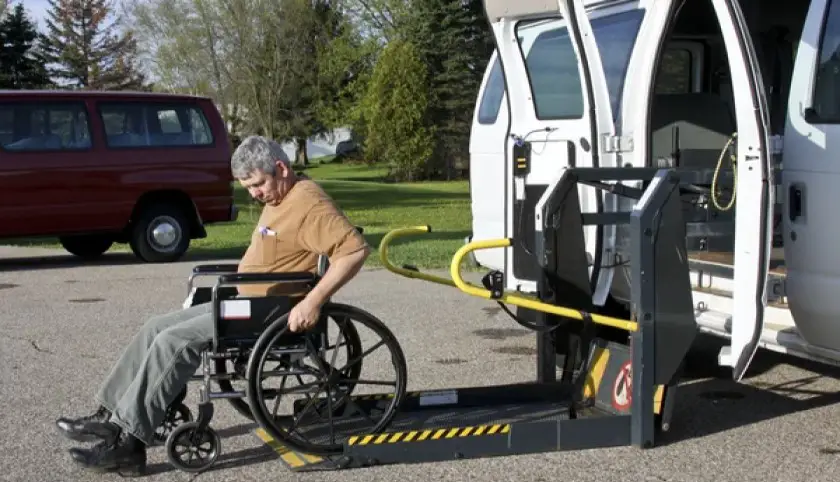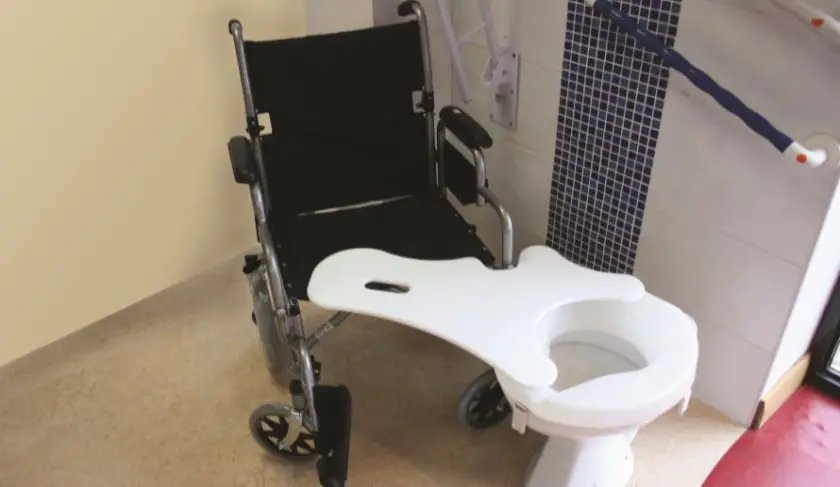As discussed previously, there are three main categories of wheelchair lifts; internal, external, and hybrid lifts.
This article will show you how to install these types of lifts.
There are different products of wheelchair lifts. Hence, the installation of each product type might tend to differ from the other. This article can, therefore, serve as a general installation guide to fixing all types of wheelchair lifts into a van.
It is also important to use the product manual because of the uniqueness of each product so that you don’t miss out on any important steps required for the installation.
Installing a wheelchair lift enables the wheelchair user to be transferred safely from the ground into the vehicle and from the vehicle back on the ground. It helps to reduce the risk of falling, provides comfort, and saves time for both the wheelchair user and the caregiver.
Table of Contents
- Installing a Wheelchair Lift Wiring into a Van (for Any Lift Category)
- Installing an External Wheelchair Lift for a Van
- Installing an Internal Wheelchair Lift for a Van
Installing a Wheelchair Lift Wiring into a Van (for Any Lift Category)

The power wire usually comes with the wheelchair lift product pack. However, if it doesn’t, you can always get it at a store that sells wheelchair lift components. The power wire has a circuit breaker, ground wire, and plug that fits into the wheelchair lift.
If the battery of your van is located at the trunk, then your work will be very easy. But if it is located in the engine/in the bonnet, then you have to run the wire all through to the back of the vehicle.
Attach the negative (black) and positive (red) wires to the battery of your van. Connect the ground wire to the negative terminal of the battery by removing the knot of the battery and attaching the terminal, then tighten the knot back when you’re done.
Remove the positive terminal and attach the circuit breaker of the power wire by removing the knot and placing the ring terminal on the positive. Then, put the knot back and make sure to tighten it. You can use zip ties to further secure both wiring parts to the terminals.
After attaching the wiring to the battery, pass your wire through the engine of the van to get to the back of the vehicle (or side, if the lift is going to be located at the side of the vehicle).
Note that if the wheelchair lift plug is not yet fitted to the wire, then remember to tape the head off to have enough wiring left to fix your wheelchair lift plug.
After passing the wire through the engine compartment, get it to the back (or side) of the van. You can use zip ties to hold the wires in place underneath the vehicle.
Upon successful passage of the wire to the back (or side), put the plug behind the bumper or attach it to the lift for easy accessibility. Make sure to secure it with a zip tie and test the lift if it’s working.
Related: How to Remove a Wheelchair Lift from a Van
Installing an External Wheelchair Lift for a Van
This category of lift can work for any kind of wheelchair including scooters and manual and electric/power wheelchairs.
Usually, before installing this type of lift, you need to make sure that the van/vehicle has a trailer hitch (at the back of the vehicle) that is capable of carrying the weight of the wheelchair lift once you install it.
Start by arranging all the lift compartments on the floor including the product manual. If the battery of your van is located in front of the vehicle, you might have to jack the car up a bit so that you have enough room from the floor to work with, especially if the vehicle is low.
After fixing the wires as stated in the section above, install the lift adapter. Note that if your van is a high vehicle, the lift adapter should be downwards, and if your van is a low vehicle, the lift adapter should face upwards.
Make sure to tighten the bolt so that the adapter can be secured.
Depending on your lift product, if it has a hitch post, then fix it and tighten the bolts and latch nuts. After doing this, your wheelchair lift is ready to be installed on the hitch post. You can then plug in the lift connector/plug into the adapter.
Use the control of the lift to raise the lift so that it can be in position with the hitch post.
Then, use the bolt to fasten the lift to the hitch post. You have to be careful not to make it too tight or too loose but in between because the lift has to be flexible when it is in use.
Related: How to Oil Your Wheelchair Effectively
Installing an Internal Wheelchair Lift for a Van

For this installation, you might just need to use a drilling machine as it is almost unavoidable (it can be a handy/portable driller). This type of lift is also suitable for all types of wheelchairs.
Position yourself at the trunk of your van (or at the doorway of your van if it is going to be a side installation). Remove the covering on the floor of the van and the plastic/rubber, which is usually around the spare tire compartment.
Fit the front mounting loosely using the existing seat bolt. Afterward, place the bottom mounting and mark the spot where you are going to drill a hole. Use the driller to drill a hole to almost a depth of 8.5mm. Then tighten the bottom mounting using a 30mm hex bolt and flat washer.
At the portion of the trunk where you have the luggage clips, you will have to remove those clips so that you can fit the top mounting with, preferably, 25mm hex blocks between the frame and the holes.
Then, secure the top mounting with M8 X 80mm hex bolts and flat washers.
After running your wires through to the trunk of the vehicle (as stated in the section above), install the lift onto the frames/mountings that you just set up. Then fix the sensor in and out.
You can adjust the newly installed lift by making sure that the top part of the lift is parallel to the ceiling of the van, fitting the straps properly to reach the screws on the lifting bracket, and attaching the keyhole brackets to the screws.
You can then comfortably try out the wheelchair lift.




